The AAO has 2 telescopes in Siding Spring out in the country, but as I'm doing a theoretical project, I wasn't really expecting to get to do any actual observations.
However, it turns out that my supervisor from UCL in London is coming down to Australia for an observing run on the Australian National University 2.3m telescope which is also based in Siding Spring, so I took off for 5 days from work to support this observation.
Siding Spring is right on the edge of the Warrumbungle National Park (I love Aussie names!) in NSW, and the nearest town is Coonabarabran, about 600km from Sydney. It was a 8 hour train/bus ride, first through the Blue Mountains, and then through cattle country. The only towns we passed by weren't so much sleepy as comatose.
Finally, we got to Coona:
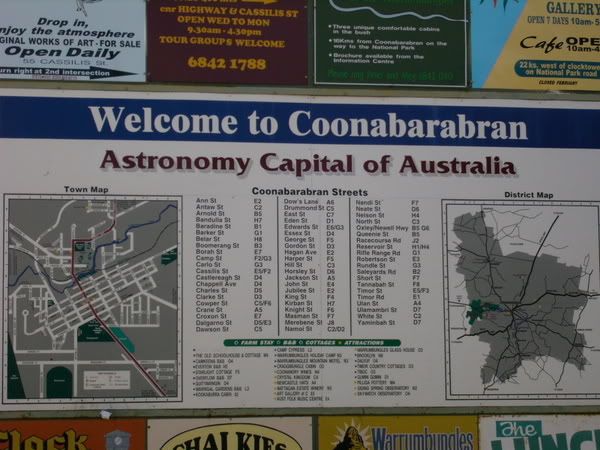
From Coona, we get a taxi up to Siding Spring, which is a mountain about 1000m high. We see a sign warning us not to disturb the local wildlife...
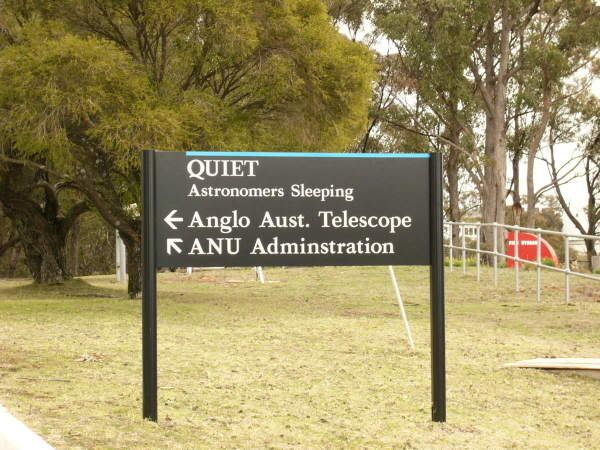
The first thing we see when we approach Siding Spring is the dome of the 3.9m diameter Anglo-Australian Telescope (AAT) looping over us...
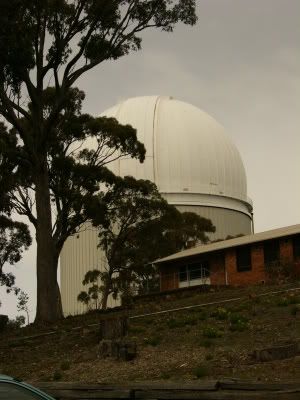
A closer view of the AAT dome...
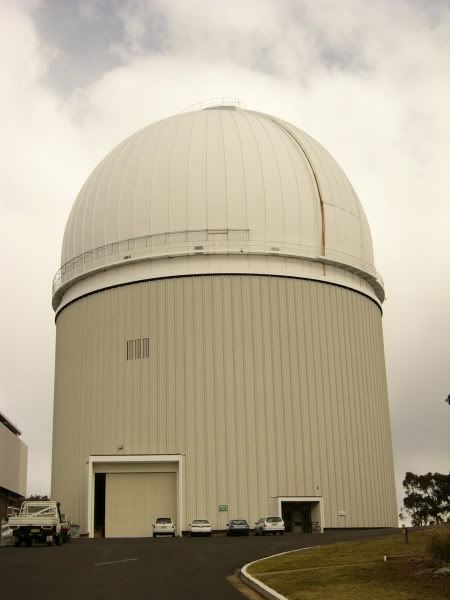
Close-by, a couple of scientifically-minded wallabies have also come on observing runs:
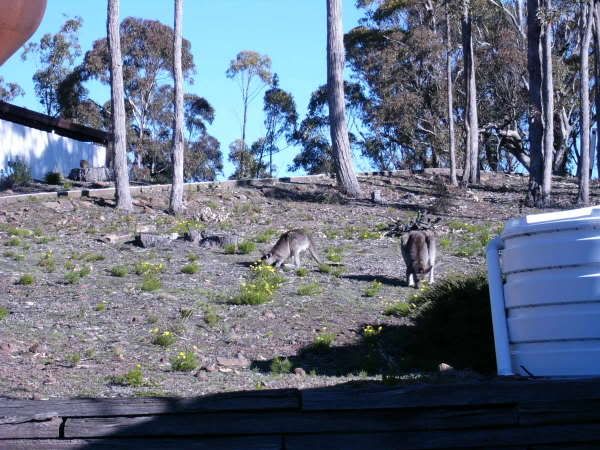
I'm officially an employee of the AAO, so I get a desk inside the dome. However, the actual telescope is off-limits to everyone apart from technical staff and observers, so I couldn't go close-up to the telescope. I got this shot from the tourist gallery. The telescope is on an equatorial mount, which means that the mounting is actually inclined at the same angle as the latitude of its position, which facilitates star-tracking, as you only need to track along one axis of the telescope:
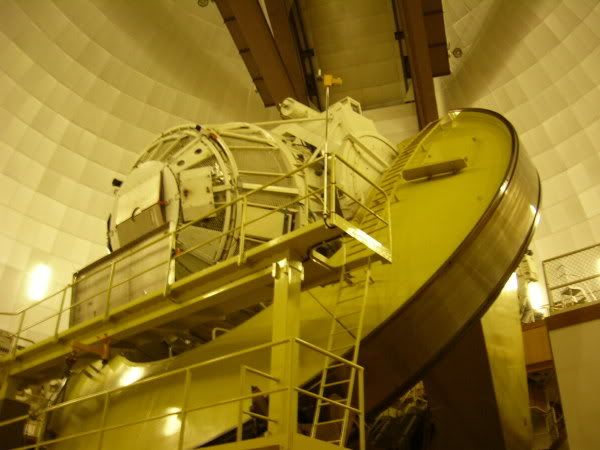
Just for reference, here is a picture of the AAT nicked off the net...

And a royal touch...
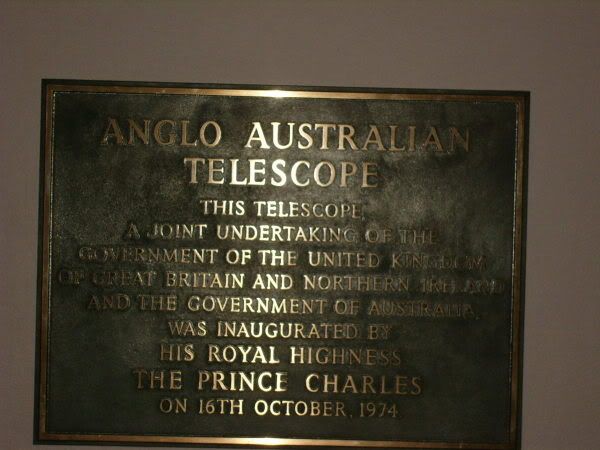
The telescope we'll be using is the ANU 2.3m reflector, which is in an 'alt-az' mounting, which is similar to a naval gun mounting. It's more difficult to track stars because u have to simultaneously adjust both axes at once. The entire building rotates with the telescope, and it's really cool as everything rattles and shakes as the telescope slews to acquire a new target...the big disadvantage is that they can't attack any plumbing to the dome, so the toilet is right at the base on the far side of this picture. The control room is about at the 2nd storey of the dome. To get from the control room to the main entrances means passing through the telescope...during observations, the light-spillage and thermal air drafts caused by this is unacceptable, so to take a piss, I have to walk out though the external door and walk down the metal stairs, all in pitch dark and freezing night wind...
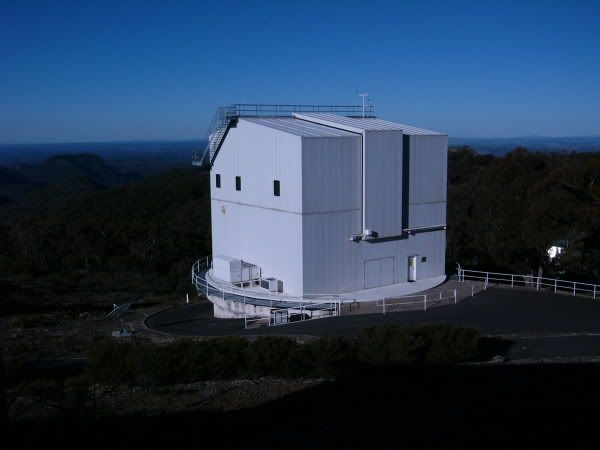
There are about 8 telescopes at Siding Spring...from L-R: ANU 15-inch, ANU 2.3m, ANU 40-inch, AAO 1.2 Schmidt, 2m Faulkes, and the 3.9m AAT. A couple of other smaller telescopes are not visible here.
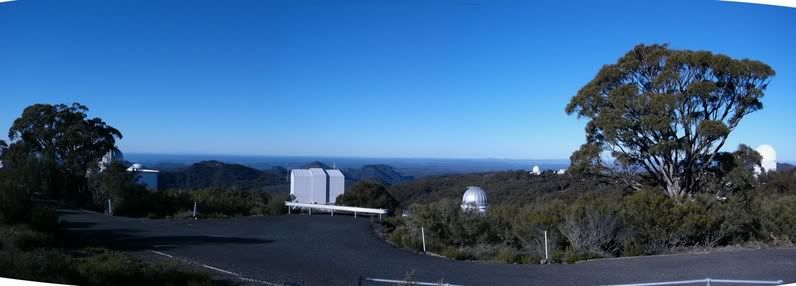
Siding Spring was chosen because there's hardly anyone within the horizon, and because it's high (by Aussie standards anyway). The mountains in the background of this view are about 100 miles away. At night, it's basically pitch-black all the way out to the horizon.
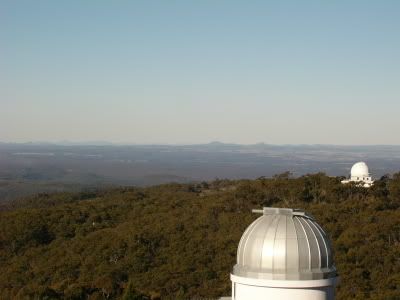
The surrounding areas are mostly national parks, and Siding Spring is the highest point nearby, so there were some spectacular views...
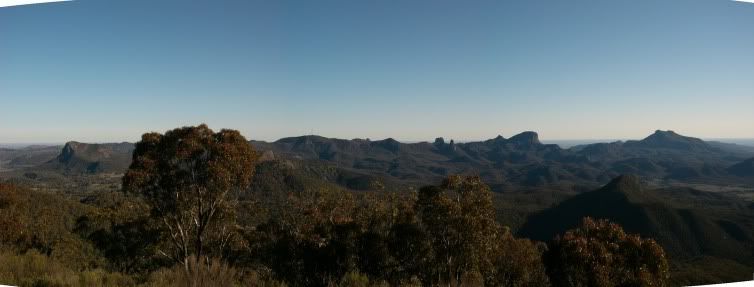
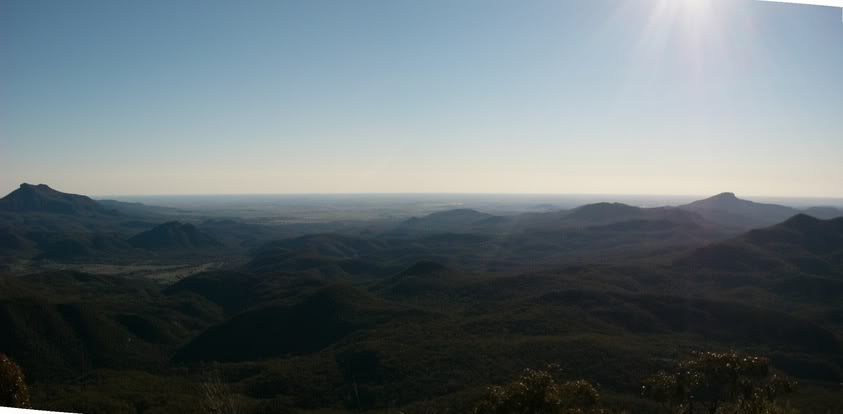
That's all for now...will be back on another day with more pics of the actual observations...
